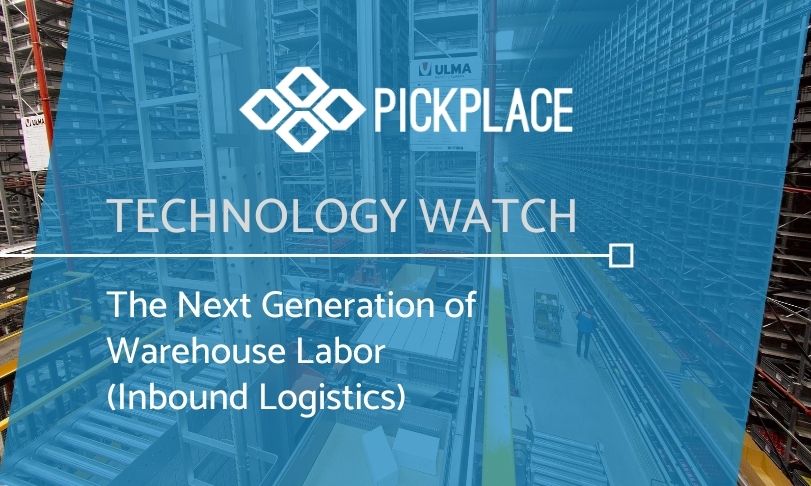Source: Inbound Logistics / by Karen Kroll

Working side by side, robots and humans reinvent warehouse work.
At the Wurth Adams warehouse outside Minneapolis, Minnesota, a shuttle system brings products to employees, who then pick the items they need to complete their orders.
“It’s a goods-to-human system,” says Ken Misch, managing director of operations for the west region. Wurth Adams is part of Wurth Industry North America, a global distributor of fasteners.
Because they don’t have to walk to find each part—previously, workers would chalk up miles every day picking products from more than 100,000 locations within the warehouse—employees at all six picking stations complete between 150 and 200 picks per hour. “Picking efficiency is about 10 to 1 versus the previous method of going to a location, picking, and then driving back,” Misch says.
The work is also physically easier and safer. The shuttle system has eliminated much of the twisting, bending, and reaching previously needed to pick items.
In another change, employees “need to understand systems more, and be able to work on computers,” Misch says. In the past, having computer skills typically was less of a requirement for many warehouse positions.
At Wurth and elsewhere, technology is changing the nature of many warehouse jobs. It often reduces physical demands. Some technologies reduce the need for employees or consultants to be on-site—critical in a time of social distancing. At the same time, advancing technology often requires different skills, including knowledge of computer and machine systems.
It’s a shift to “HUMANufacturing,” says Duilio Amico, marketing and network development director for robotics and automation for Comau, a Turin, Italy-based provider of industrial automation solutions.
The word—a mashup of human and manufacturing—reflects the strengths and limitations of each. Automation technology offers speed and strength and can easily handle repetitive, physically demanding tasks, but the systems can be rigid and inflexible.
“We need to combine the dexterity and flexibility of humans with the speed and ability of machines,” Amico says.
Not surprisingly, e-commerce is driving this change, as it has shifted a lot of warehouse work from pallets to individual orders. “The idea of shuttling individual parts to workers isn’t new, but the energy, investment, and design work has come about in the past five to seven years because of e-commerce,” notes Bryan Jensen, chair and executive vice president with St. Onge Company, a supply chain engineer and advisor.
More recently, concerns about COVID-19 have accelerated this shift. In their efforts to implement social distancing guidelines, warehouse managers are working to “become more digital and find different ways to order and receive products,” says Christian Dow, executive vice president of membership and industry leadership with MHI, a materials handling, logistics, and supply chain association.
BOOSTING WORKER EFFICIENCY
Digital supply chains, using technologies such as robotics, wearables, and autonomous vehicles, will be the dominant supply chain model within the next five years, according to 80% of the supply chain professionals who responded to MHI’s 2020 Annual Industry Report.
A big reason for this interest is the boost technology can provide to worker efficiency. Autonomous mobile robots (AMRs) can take over aspects of warehouse work that are tedious or dangerous, says Stefan Nusser, vice president of product with Fetch Robotics. Like shuttle systems, AMRs often are deployed to find and move items to be picked, eliminating much of the time employees would otherwise spend traversing the warehouse.
Another benefit: Because AMRs are programmed to know where products are located, they can help seasonal warehouse workers become productive quickly.
Advances in artificial intelligence (AI) are helping robots more adeptly manipulate different items within warehouses. It’s not difficult to build a robot that can pick one item. However, e-commerce orders can include a grab-bag of products. “To handle a huge diversity of items, you need a robot with intelligence,” says Peter Xi Chen, co-founder and chief executive officer with covariant.ai, a developer of universal AI for robots.
Innovation is also occurring with wearables that boost efficiency, such as augmented reality glasses, as well as voice and/or visual pick solutions.
One company Dow worked with implemented wearable computers that directed employee picking as well as a gamification app that let employees see how the picking speed of their group compared to others. Their competitive spirits kicked in, and productivity rose by 20%.
The move to intuitive touchscreen user interfaces within many wearables allows even new workers with little warehouse experience to become productive quickly, says Mark Wheeler, director of supply chain solutions with Zebra, a provider of mobile computing solutions.
ENHANCING SAFETY
In 2018, the warehousing and storage industry experienced 5.1 nonfatal injuries and illnesses per 100 employees, according to the U.S. Bureau of Labor Statistics. That compares to a rate of 3.1 for all industries.
Technology can bring that number down, reducing both the human and financial cost of injuries. Goods-to-persons solutions, such as AMRs and AGVs, generally mean workers lift fewer objects, and those they do lift tend to weigh less. They’re also more likely to maintain proper form. These features can lead to fewer injuries and potentially lower worker’s compensation costs, says Ed Romaine, vice president, marketing and business development with Conveyco Technologies, a materials handling system integrator.
In addition, shuttle systems and AMRs are typically designed with ergonomics and safety in mind. Moving parts are guarded, and the height and positioning of products and totes minimize movements that can lead to repetitive-motion injuries.
Exoskeletons also can help reduce fatigue and injuries stemming from repetitive movements. While currently more common in manufacturing, use within warehousing and logistics will grow, Amico predicts.
For instance, lower-limb exoskeletons brace employees’ backs when they’re lifting heavier objects and “force proper posture,” he says. That can reduce the chance of injury.
As systems such as shuttles and AMRs increase picking rates, more warehouse employees are “experiencing upper body sprains from the increased repetitive motion,” says Joseph Zawaideh, vice president of marketing and business development with Levitate Technologies, which offers the AIRFRAME exoskeleton. An upper body exoskeleton reduces shoulder, neck, and back fatigue for employees whose work requires repetitive arm movements.
Automation also can help design a warehouse that enhances social distancing. Because automation reduces walking, it also decreases the likelihood employees will inadvertently cross paths with coworkers. “It’s often possible to place workstations at least six feet apart, driving social distancing between associates,” Jensen says.
Technology can also enhance safety through better training. Warehouses can use virtual reality, augmented reality, and simulation technology to offer training that’s comprehensive, yet holds little risk of injury. “Virtual reality training allows realistic training with the capability to simulate countless more operating scenarios than can be covered during traditional on-the-job training approaches,” says Thomas Boykin, supply chain specialist leader with Deloitte Consulting.
While technology is often thought of as appealing mostly to young people, it can make warehouse jobs more appealing to employees of all generations. To be sure, technology can help attract and retain younger workers “who expect a level of digital consciousness,” Boykin says. At the same time, by reducing the physically demanding elements of many warehouse positions, technology opens them to older workers or those with physical limitations.
Moreover, many of today’s warehouse technologies require workers with a wider range of knowledge, including engineering and programming skills. “It’s a technology role, versus just picking,” Dow says. This change also appeals to many potential workers.
THE FLIP SIDE OF TECHNOLOGY
Not all warehouse jobs will magically transform. While automation may eliminate much of the walking that has characterized many warehouse jobs, some jobs now may require an individual to stand in place, pick items, and send them on their way. “It still can be monotonous,” Jensen notes.
Another concern that inevitably arises when discussing automation is the potential impact on the number of workers needed. Few envision completely automated warehouses with no employees—three-quarters of those who responded to Zebra Technologies’ 2024 Warehousing Vision Study say human interaction remains part of their optimal operational balance.
“Even though I’m bullish on technology, robots can’t work without human help,” Chen says.
At the same time, it’s possible the workforce will shrink. For instance, Chen foresees a future in which employees supervise fleets of smart robots that do repetitive work. While employees will be needed, it may be possible to run some warehouses with skeleton crews.
Technology can also help companies grow, minimizing the need to cut headcount. At Wurth Industry North America, the goal of adding technology is to accommodate more business. “We get more efficient to drive more business,” Misch says.

